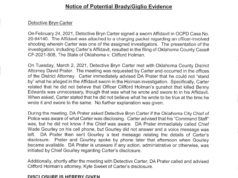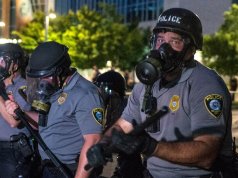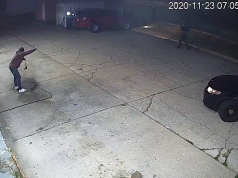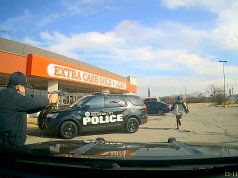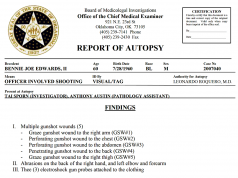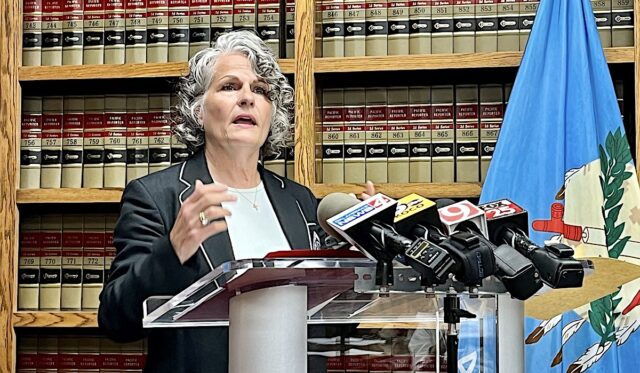

New Oklahoma County District Attorney Vicki Behenna announced her decision today to dismiss manslaughter charges her predecessor had filed against seven police officers in three separate fatal shootings.
Officers with the Oklahoma City Police Department shot 15-year-old Stavian Rodriguez in November 2020 and 60-year-old Bennie Edwards less than a month later. A police officer in The Village shot 49-year-old Christopher Poor in July 2020.
To reach her decisions to dismiss all three cases, Behenna said she sought help reviewing evidence from a “team of lawyers,” as well as Clarence Chapman, a retired sheriff’s deputy from California who operates National Justice Consultants, Inc.
“In addition to reviewing the facts of the case, in addition to having an expert review the evidence in the case, we reviewed Oklahoma law. There is a specific statute — [Title 21, Section 732] — that is entitled ‘justifiable deadly force by [an officer],'” Behenna said. “That statute sets forth the groundwork and the law that we have to [follow] in evaluating whether an officer has used excessive force or the force that they used is justifiable. That law basically says that if a suspect is trying to escape or evade arrest and the suspect is believed to have committed a crime involving serious bodily harm or the threat of serious bodily harm, force — even deadly force — can be justifiable. The statute also says that if an officer reasonably believes the force is necessary to protect him or herself from serious bodily injury or to protect somebody else from serious bodily injury, then deadly force can be justified.”
Behenna started her Friday by revealing her decision to and discussing that statute with Cameo Holland, the mother of Stavian Rodriguez, a teenager who became locked in a southwest OKC convenience store during a botched robbery. Surrounded for several minutes by more than two dozen OKCPD officers, Rodriguez was instructed to exit the locked gas station. He eventually climbed out of a window, placed his pistol on the ground and was fatally shot by several officers when he reached toward his pants. He did not have another weapon.
Holland, who said Behenna discouraged her from having her attorney join Friday morning’s meeting, said she felt “disbelief” and was “having a really hard time” after learning the news.
“It feels like they killed my son all over again. That’s what it feels like right now,” Holland told NonDoc prior to Behenna’s public press conference. “When a district attorney looks at you, and when they tell you that the justice system is failing you, and they apologize for that, that’s a clear sign that there’s something wrong with the laws. When you look at who proposes a lot of these ideas, it’s their own police union.”
Behenna, who was not supported by the Fraternal Order of Police Lodge 123 during last year’s campaign, said the analysis produced by Chapman formed about half of her decision to dismiss the cases with prejudice, which means they cannot be refiled by her even if new evidence came to light in the future.
“Part of it is in consultation with an expert. I don’t think an expert on the use of force had ever been retained in those cases to evaluate the facts and look at it frame-by-frame, as our expert did,” Behenna said. “In addition to that, as I stated under (Title) 21, (Section) 732, it states specifically that officers who are effecting an arrest on someone who is trying to escape an arrest and who has, or who has attempted, bodily injury, a police officer can use deadly force and that force would be justified based on those factors.”
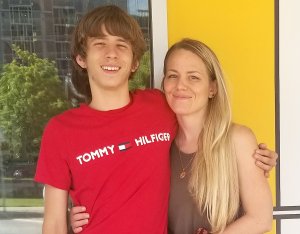
Holland said some parts of Behenna’s explanation confused her Friday morning, especially considering that Behenna does not have the same experiences and background as former District Attorney David Prater, who filed the manslaughter charges against five OKCPD officers in March 2021 and had twice previously convicted local police officers for fatal shootings.
“David Prater was a police officer for a long time, so that was part of my confusion, too,” Holland said. “If someone who was a police officer and was very familiar with the side of things that she is not — if he would file charges, why would he do that if he didn’t feel like there were charges to be filed?
“And she just said, ‘Well, I’m not sure. I can’t tell you what he was thinking.’ And I was like, ‘Well, he didn’t leave some notes behind to have conversations?’ And she said, ‘Yeah, we had lots of conversations. He left plenty of notes.’ But she just said, ‘But he never told me about this statute.’ And it took until me leaving and just having a minute to think, ‘Why would somebody need to tell you about that if you’re the district attorney?’ Especially a statute that I’m aware of. I’ve seen it before. It’s been around since 1990.”
Calling Behenna’s decision “disappointing,” Prater told NonDoc that he met with Behenna for about one hour in November following her election to review the video footage of the Rodriguez shooting.
“At no time after that was I called or was there a request for additional information or any information regarding decisions in any of the police-involved shooting cases,” Prater said.
The former district attorney, who sometimes clashed with local police leaders for prosecuting and convicting officers, said he could not explain why Behenna said state statute would prevent her from pursuing the cases.
“There were no statutes and no case law in any way that convinced me that we should not charge everyone that we charged. We have been aware of the law, we reviewed the law constantly when making charging decisions on police officers and others, and there were no statutes or case law that precluded these officers from being charged,” Prater said. “We believed there was probable cause to file the charges, and we believed also that we would be able to bring them over at preliminary hearing to be held over at trial.”
Prater said that while Behenna consulted Chapman, who once served as chief of police for the UCLA Police Department, she did not ask him about the cases beyond the meeting in November.
“I was unaware that this was going to occur today,” Prater said. “Neither Mrs. Behenna, nor anyone from her office, called or contacted me regarding this matter or asked any questions about our filing decisions or asked any questions about something that they may have missed that justified our filing of charges.”
At her press conference, Behenna declined to discuss her office’s terms of engagement with Chapman or how much he was paid for his services.
“I don’t know that that’s really relevant here,” Behenna said.
Earlier Friday, Behenna’s office declined to release a copy of its professional services contract with Chapman, arguing that it is exempt from the Oklahoma Open Records Act. NonDoc had requested the contract last week.
“The Open Records Act not only makes our litigation files confidential it also limits the records we must produce,” assistant district attorney Aaron Etherington wrote in an email. “The contract requested falls outside the scope of those we are required to disclose under the act. Moreover, it is protected by common law privileges for attorney work product and the deliberative process privilege.”
Behenna said Friday that, in the future, all fatal officer-involved shootings in Oklahoma County will be presented for charging consideration by the state’s multi-county grand jury, a private body of citizens that can return indictments and investigate alleged crimes.
Police union, OKCPD chief pleased with decisions
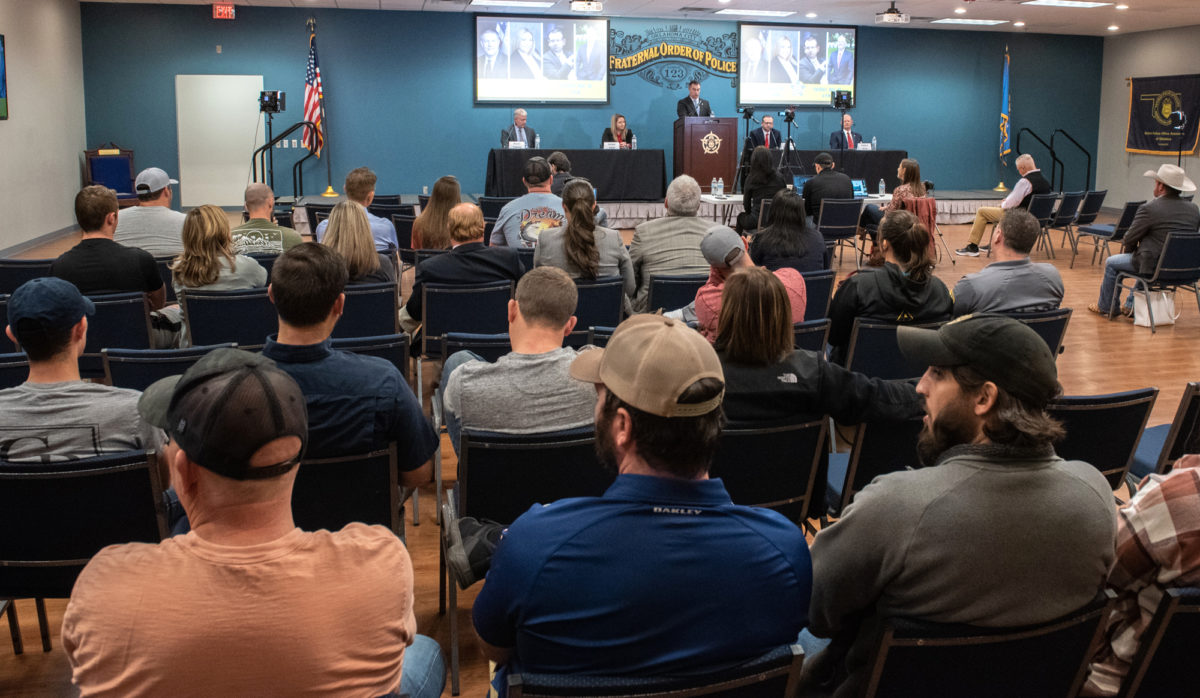
Mark Nelson, president of the FOP Lodge 123, said his union had not spoken with Behenna since election night in November so as to avoid “any perception of impropriety.”
“Our members are trained to make split-second, life-or-death decisions, even in the most unpredictable, chaotic situations,” he said in a statement. “Attacks, ambush-style assaults, and line-of-duty deaths are at record highs in our profession. It is a tragedy any time someone in our city is killed or injured, and our officers are on the streets every day doing a dangerous job while trying to prevent harm and protect the innocent.”
All seven officers — six with the Oklahoma City Police Department and the seventh with The Village Police Department — have been on administrative leave since each fatal shooting.
“As we have maintained since this incident, our officers followed their training and did what was necessary to protect themselves and other Oklahoma City residents,” Nelson said. “We are thankful District Attorney Behenna dropped these charges.”
OKCPD Chief Wade Gourley also released a statement.
“The wheels of justice often turn slow and today’s decision, while important, will not by itself ease the pain for the families and friends of Bennie Edwards and Stavian Rodriguez, the deep-rooted effect on our community, nor the profound emotional toll on the involved officers and their families,” Gourley said. “Please continue to pray for everyone involved.”
Gourley said OKCPD will now focus on “healing and learning,” referencing recent efforts to implement recommendations from a national consulting group aimed at improving the department.
“One of our key initiatives involved establishing a reality-based training unit, which has equipped every member of our police department with better de-escalation strategies and best-in-class tactics,” Gourley said. “Additionally, we have provided officers with more less-lethal equipment and increased the number of officers and dispatchers with crisis intervention training. We are committed to continual improvement to ensure the people of Oklahoma City receive the professional and compassionate service everyone deserves.”
Holland: ‘It’s worse than unfair’
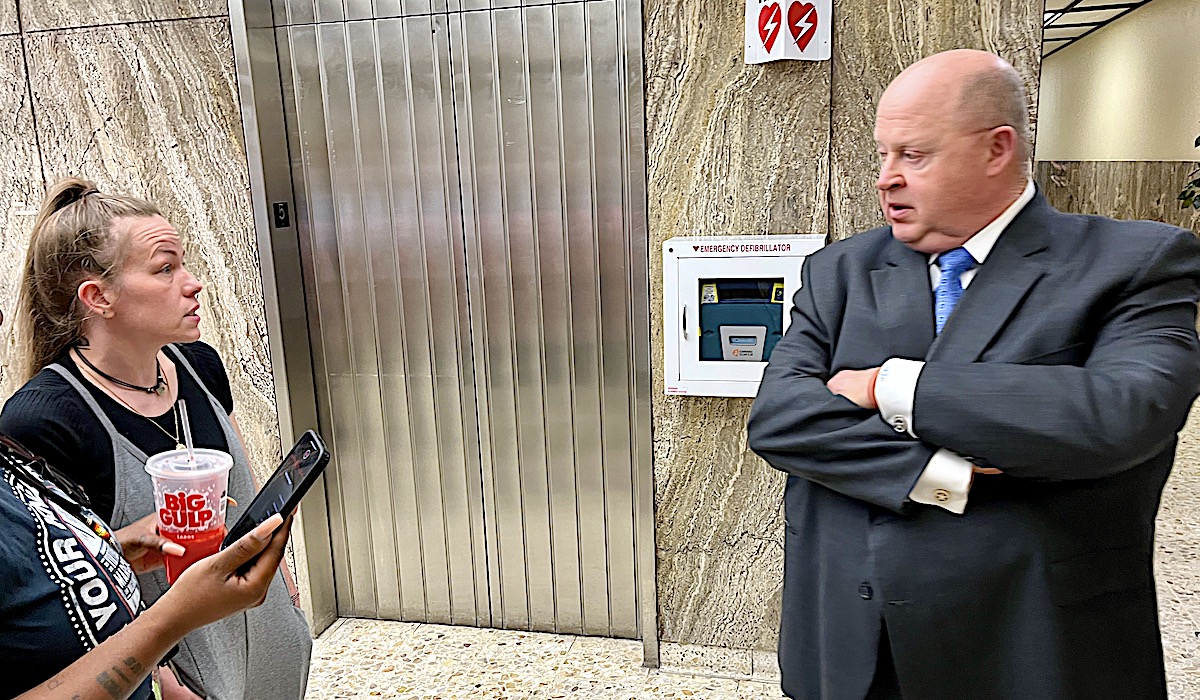
The three fatal police shooting cases — each filed between 2020 and 2021 by Prater — have lingered for more than a year as Oklahomans waited for the state Court of Criminal Appeals to issue its ruling in State of Oklahoma v. John Mitchell, which dealt with a fatal police shooting in Blackwell and posed a question about whether a use-of-force expert must testify at preliminary hearings for officers charged in fatal shootings.
The appellate court issued its opinion in June, but because the judges deemed Mitchell’s actions “objectively reasonable,” they wrote that they “need not decide here whether the absence of such testimony requires” dismissal.
This legislative session, lawmakers passed HB 2537 to amend Title 22, Section 34.1 and add an additional requirement that “excessive force” must be “established as an element of any alleged violation under the criminal laws of this state.”
In all three cases, the charges were filed by Prater, who retired in January. In the November election, Behenna defeated former Republican legislator Kevin Calvey, a firebrand conservative who launched his campaign by promising to drop charges against all six of the OKCPD officers involved in the Edwards and Rodriguez shootings.
Holland, the mother of Rodriguez, referenced Calvey’s remarks disparaging her son throughout last year’s campaign.
“It’s not as simple as, ‘I lost my child,’ or ‘I miss my child.’ It hurts to live when your child is taken from you like that, and then to have them give you some kind of hope for almost three years that at least these people are going to have to go in front of a judge, and then going through everything — with having to listen to other people who ran for DA say horrible things about my child, and then still to get past that and to think that there is still hope that these people will not get to just go back to life like it was before Nov. 23 of 2020, that’s just hard,” Holland said. “I never get to go back. I can’t go back in time. What did they miss out on? What did this cost them? I don’t like to say it’s not fair. It’s worse than unfair.”
After Friday’s press conference, Holland again heard someone speak ill of her dead son. Attorney Gary James — who represents Chance Avery of The Village and Corey Adams, one of the five OKCPD officers who had been charged for shooting Rodriguez — was speaking to media when Holland heard him reference how attorneys for the OKCPD officers “all kind of worked together” on their defenses.
“Had to get your stories together?” Holland interjected. “Everybody had to work together to get their story together?”
“Yeah, you’re right,” James said.
Holland replied: “I know, cause they’re liars, they’re murderers, they’re cowards.”
“Yep, they are,” James said sarcastically. “Is your son the armed robber?”
The verbal altercation between Holland, James and one of James’ associates lasted for two minutes outside of Behenna’s office. Holland accused James of “gloating,” and she ultimately walked away before returning to enter Behenna’s office again for another conversation with the district attorney.
James said police officers “almost have to” assume that someone reaching for their pants has a gun. He acknowledged that the OKCPD officers who shot Rodriguez never saw him with a second gun after he had dropped his pistol.
“No, never got to that point in time. They have to react,” James said. “There’s a case, [Estate of Larsen v. Murr], that says a police officer doesn’t have to see ‘the glint of steel’ before he uses deadly force, and I know that’s debated. I mean, everybody’s human.”
Bennie Edwards shooting death
(Editor’s note: Videos embedded below show shooting deaths from 2020 that may be upsetting to watch.)
When OKCPD Sgt. Clifford Holman shot Bennie Edwards in front of a pawn shop on Dec. 11, 2020, he did not see the steel of a gun.
Instead, he arrived on the scene and saw an agitated Edwards — a man experiencing homelessness and psychosis — holding a knife and talking to a pair of other officers.
Holman attempted to tase Edwards, and another officer deployed pepper-spray on Edwards, who retreated toward the shopping center before briefly advancing at police, turning sharply to the left and running away through the parking lot. Holman fired multiple shots, dropping Edwards with a final bullet.
Prater charged Holman with first-degree manslaughter, arguing that Edwards stopped being a threat as he ran away from officers in the parking lot. Prater did not file charges against a second officer who had deployed his gun, Master Sgt. Keith Duroy, because he said Edwards had briefly advanced toward Duroy while holding the knife. Seconds later, however, Edwards was running away from the officers when Holman shot him.
On Friday, Behenna said that even as Edwards fled police on foot with the knife, it was legal for Holman to shoot him in the back because he had previously “threatened bodily injury.”
“When Officer Holman arrived, they did use non-lethal force in an attempt to try to deescalate the situation. When Mr. Edwards was hit in the face with pepper spray, that’s when he charged,” Behenna said. “And in all fairness, he got within about four or five feet — we’ve done measurements of the parking lot and the distances. That’s one of the things our expert reviewed. He got within four or five feet of Sgt. Duroy before he made the sharp left turn. But again, reviewing Oklahoma law, when somebody — even a fleeing felon who has threatened bodily injury — officers can use excessive force.”
A press release distributed by Behenna’s office quoted part of Chapman’s report on the Edwards shooting.
“Contemporary police training and national standards of care instructs that suspects exhibiting obvious symptoms of mental illness can be dangerous and a threat to officer safety,” Chapman wrote.
An autopsy revealed that Edwards, a man with a history of severe mental illness, had plugged his ears with paper products at the time of his death.
Stavian Rodriguez shooting death
In March 2021, Prater filed first-degree manslaughter charges against five Oklahoma City Police Department officers who fatally shot 15-year-old Stavian Rodriguez after he had surrendered during a robbery, dropped his handgun and reached toward his pants.
The five OKCPD officers charged with manslaughter were:
- Corey Adams
- Jared Barton
- Brad Pemberton
- Bethany Sears
- John Skuta
A sixth officer involved in the incident — Sgt. Sarah Carli — was not charged because she fired a nonlethal beanbag round, Prater said at the time. Other officers on the scene did not fire their weapons and also did not face charges.
Behenna discussed few details of the Rodriguez shooting during her press conference Friday. In her press release, however, she quoted Chapman’s analysis that Rodriguez had “created a sufficiency of fear” in the minds of officers.
“The act of a suspect facing and making eye contact with uniformed armed police officers while disobeying orders and lowering his hand to his waistband area as if retrieving a firearm can be reasonably interpretated (sic) as an imminent deadly threat requiring defensive action,” Chapman wrote. “The five officers acted lawfully and appropriately in the fact of an imminent and credible deadly threat.”
Holland, Rodriguez’s mother, called Behenna an “incredibly nice and compassionate” person whose “emotions and words were sincere.” Still, she said, the decision to drop the charges hurt.
“I just wanted them to at least have to face accountability, and if a jury said not guilty — and honestly I wouldn’t have been completely surprised about that — it would be on your record that you were charged with a crime and not convicted,” Holland said. “And that would never go away, and that’s all I wanted. I wanted them to go through the same system that my son should have gone through, and then if that was the outcome that they were found not guilty, I could have lived with that much easier than I can live with them not even being questioned or not having to face anybody about it other than themselves.”
Christopher Poor shooting death
VILLAGE OIS BODY CAM: I just obtained the body camera footage from an officer involved shooting in July in The Village following a domestic dispute.
In the footage, you see officer Chance Avery fatally shoot 49-year-old Christopher Poor who was holding a baseball bat. @kfor pic.twitter.com/D7ulwuQbvh
— Jessica Bruno Richards (@Jbrunonews) September 14, 2020
Of the cases discussed Friday by Behenna, the charges against Chance Avery, a former police officer in The Village who fatally shot Christopher Poor in July 2020, had progressed the farthest. That case had been set to go to trial last fall, but the pending Mitchell decision before the Court of Criminal Appeals delayed the process.
Prior to Behenna’s decision Friday, attorneys were preparing for Avery’s “stand your ground” evidentiary hearing set for Sept. 18.
In July 2020, Avery shot Poor three times after responding to a domestic disturbance call made by Poor’s wife, who was at the home to collect personal belongings.
Although Poor had not been home when Avery and Poor’s wife had arrived, Poor eventually entered the house wielding an aluminum baseball bat. In response, Avery pulled his gun and told him to “put the bat down right now.”
Poor said he was going to put the bat down, but Avery followed him and repeated his initial command multiple times. Poor eventually took steps toward Avery, who shot him.
In Behenna’s press release, Chapman said the shooting was justified.
“A suspect armed with a potentially deadly weapon advancing directly toward a uniformed and armed police officer, while disobeying orders to drop the weapon can be reasonably interpretated (sic) as a deadly threat,” Chapman wrote. “Officer Avery acted in strict accord with nationally accepted standards of proper procedures and tactics in defense of his life and the lives of others in the face of an imminent and credible deadly threat.”
Behenna said Friday that she spoke with Poor’s wife about her decision Thursday night. After meeting with Holland on Friday morning, Behenna said she also spoke with relatives of Bennie Edwards. Around noon, she met with pastors and community leaders in northeast Oklahoma City.
“These families are grieving. This decision that has been made is difficult,” Behenna told media. “And no matter what this office does or says, these families are forever changed.”
(Correction: This article was updated at 8:30 a.m. Thursday, Aug. 3, to clarify a statement that was not a direct quote.)










